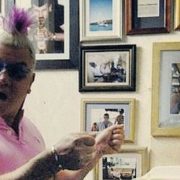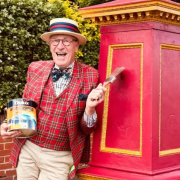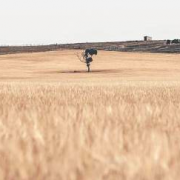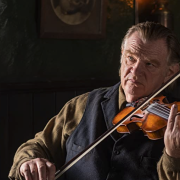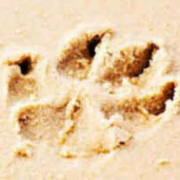A Nod’s as good as a wink to a blind horse ….
The swaggie was out of sorts, no doubt about it. Just released from Geelong Goal, the old bluestone
gaol, where he’d been sequestered for a few days over unpaid fines, he came bellowing into the
office demanding a reporter. And roundly cursing the long arm of the law.
The plods had rejected his offer to have them drive him home to his bush hideaway in the Great
Otways National Park behind Apollo Bay. Told him to catch a bus.
“You’d think I was a criminal or something,” he groused. “You can’t just throw someone out of jail
on to the streets.”
But that wasn’t Noddy Hill’s only gripe. He was filthy on the food he’d been fed while behind
bars. Pure stodge, terrible for the bowels, and he was in pain as a result of the injustice, he moaned.
“It’s the constipation. You put that in your paper! The prison system is constipating innocent people.
It’s not right. It’s just not right!” he railed.
And, yes, there should be a law against it. And the cops should give you a lift home, in case you
didn’t get that the first time. And what’s the world coming to? Just not good enough …
You get the drift.
Old Noddy was about 45 back then, three decades ago. Looked for all the world like a latter-day
swaggy. Wild hair, wild eyes, wild demeanour. In fact, he was a hermit who lived deep in the forest
with a wild independence that rejected society and civilisation, and a head full of ideas that
reflected a powerful but eccentric intellect. An alternative lifestyle, if you like. Undiagnosed, by
other assessments.
The Otways harbour all manner of unusual tales. Noddy’s hardly on his own. Panthers, carnivorous
snails, Tasmanian tigers, UFOs, German wartime submarines, shipwrecks, dinosaurs, quolls, giant
ferns and yowies are just scratching the surface.
Cut across the southwest hinterland and you’ll trip over rain-gauge crater lakes, megafauna trails,
volcanoes, large open maar craters, caves, scoria cones, mystery ships, bunyip bones, early
Australian discoveries by Portugal and China, floating islands, exquisite waterfalls — all manner of
weird and wonderful, of believe it or not. Fascinating place. National Geographic would go silly for
it.
But for all the area’s extraordinary otherness — and the fact a few of these have problems of their
own, too — Noddy’s tough to eclipse.
For years a local identity quietly celebrated for his differentness, he was considered a harmless,
amusing and, generally speaking, acceptable outsider. A hermit. A swaggie. An oddity, a bit out
there but okay.
However, beneath the innocuous eccentricity, a darker side to Noddy Hill was brooding. Scheming
and plotting nefarious plans no-one thought him capable of hatching. And his plans were rather
nasty.
No one doubts his lot wasn’t helped by drugs — hallucinogens like LSD, mescaline and magic
mushrooms. Mix them with an evangelistic obsession, multiple internments in mental institutions —
and gaol — and an autodidact’s love for biochemistry, microbiology, endocrinology and toxicology
and, well, you’re on the road to somewhere.
But that road struck out into no-man’s land when Noddy decided to posted an image of a bomb on
the internet — what he called ‘bushfire bomb mark 3. Police were staggered by the detail he knows
of explosive devices and feared his mental health status might lead to terrorist attacks and
holocaust-type bushfires through the Otways.
Coming on top of emails comparing himself with mass murderers Julian Knight and Martin Bryant,
and with Jesus Christ, on top of suicide threats and references to Bali bombing, World War III,
holocausts, doomsday and nirvana, it’s fair to say they were a bit concerned. The swaggy seemed
pretty deranged.
Noddy had managed to email stalk some 600 people or agencies, including Premier Daniel
Andrews, in his mission and police saw his so-called ‘Placebo Park’ hideout with its dozen huts
and satellite dish as more terrorist bunker than bush retreat.
Eventually, after seven months in jail and a court case, and in a frail state of health, he was
transferred to a nursing home where the judge was happy to see him stay.
So in the end, with his menace muted, his mental status noted, Noddy Hill found the care and
warmth he’d been missing since the 1970s when he went off the rails after two deckhands on his
abalone boat died near Portland.
Better late than never, I suppose. It’s funny but it makes me think of the old story of the
unexpected warmth nature has provided in another of the great southwest’s many anomalies, Mount
Leura near Camperdown.
Odd thing is that a holocaust might well have been in the wind there, too. For all we know, it could
still be so today. Vulcan mischief is commonplace across the southwest, as recent as maybe 4500
years ago. Hence the Dead Sea-like salty crater lakes — great for a lazy Saturday afternoon’s beer-
drinking — the spooky Stony Rises, igneous outcrops, strange subterranean gurglings and more
you’ll find there.
Indigenous folk have it invested in their oral tradition. When volcanic bombs from the scoria of
Mount Leura’s cone were shown to one Aboriginal bloke, he said they were like stones his
forefathers claimed were thrown from the hill by the action of fire.
Back up a little to 1911 and you might get my Noddy-nature-nurture drift. That’s when
Geelong’s News of the Week paper reported “a strange occurrence’’ at the Curdies River:
“All the water became quite white, with froth upon it, which afterwards turned to green slime,’’ it
said. “Large numbers of fish in the stream died. The water gave out a peculiar odour and cattle
refused to drink it.’’
It wasn’t the first time the locals had witnessed such peculiarities. Same thing happened 20 years
earlier; all supposedly the result of a volcanic disturbance in Lake Purrumbete, not far from Mount
Leura.
“It is said that divers were sent down into the lake on the previous occasion to investigate, but the
water was so hot that they could not stay in it,’’ the News of the Week reported.
The paper also reports that blokes humping their waggas through the district took advantage of the
heat around Mount Leura, reporting: “Swagmen frequently camped in such places to obtain
warmth.”
No doubt our Noddy, with his liking for self-sufficiency, would appreciate the fact. But a bloke like
him would also appreciate the many other mysteries and curiosities of the Otways and the
southwest.
In the early days of white invasion, it seemed a wild place. It landscape was bizarre, queer, crawling
with the unknown and the dangerous, with Aborigines and with unfamiliar wildlife. It drew only the
toughest of pioneers and even they battled to stave off the superstitions of bunyips and pookahs in
the region’s splendid isolation.
Yet artists such as Nicholas Chevalier were alert to that splendour early in the piece, capturing the
likes of Red Rock’s crater lakes in the 1860s with a dreamy pale green and blue vista. Similarly,
photographer Fred Kruger preserved Mount Leura to an 1880s moment in history with its lightly
timbered slopes high over the wide verandas of Camperdown. Artist Eugene von Guerard exercised
his draughting excellence to capture the flora and fauna of Koroit’s Tower Hill, outside
Warrnambool, presumably dodging its curious resident emus in the process.
A powerful sense of place and wonder lives on in the works of Otways laureate Gregory Day,
whose exquisite studies of life, love and environment along the Great Ocean Road are some of the
best documents we have.
Some time ago, Geelong Art Gallery exhibited the powerful work of several artists in a charming
essay on Lake Gnotuk.
Drawing on history, geology and indigenous stories, their combined opus was as exhilarating and
captivating as it was outworldly: bottles plugged with cork, stones, sand and water from the lake;
photos of tiny ostrocods; draughtsmen images from the 1850s; russet rock, soil, stone and granule
textures; sepia takes of the crater welded to ochre impressions; prehistoric fish bones; fossilised
shell necklaces, magnetic swirlings of rock and soil reflecting the lava tubs and underground
vortexes of the antediluvian landscapes.
Science meets art, environment meets art, palaeontology meets art; I don’t think it would have been
lost on someone like Noddy. I’m sure he’d wonder at the idea of clear hyper-saline water covering
the stumps of 2000-year-old trees. Maybe he’d think, too, that such volcanic dreaming of the
southwest is just an opening foray into a broader church of natural science, history, mystery and
folklore.
Maybe, just maybe, had his mental health issues been identified and acted on earlier — had he been
closer to the society he shunned — he’d have contributed differently to that oeuvre than becoming
the rather sad piece of folklore he is now.
Pity, really, that we’re all still a bit constipated that way towards such people.
Link: https://regionalnews.smedia.com.au/geelongadvertiser/TranslateArticle.aspx?doc=NCGA%2F2019%2F10%2F22&entity=ar01703



